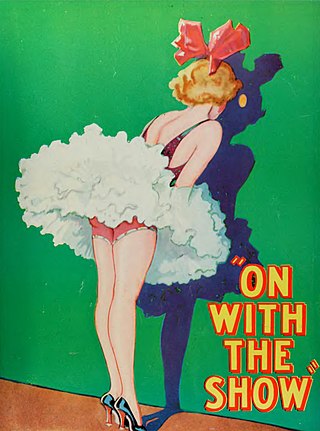Related Research Articles

War film is a film genre concerned with warfare, typically about naval, air, or land battles, with combat scenes central to the drama. Themes explored include combat, survival and escape, camaraderie between soldiers, sacrifice, the futility and inhumanity of battle, the effects of war on society, and the moral and human issues raised by war. The stories told may be fiction, historical drama, or biographical.

A blockbuster is a work of entertainment—typically used to describe a feature film produced by a major film studio, but also other media—that is highly popular and financially successful. The term has also come to refer to any large-budget production intended for "blockbuster" status, aimed at mass markets with associated merchandising, sometimes on a scale that meant the financial fortunes of a film studio or a distributor could depend on it.

Cyril Raker Endfield was an American-British film director, who at times also worked as a writer, theatre director, magician and inventor. Born in Scranton, Pennsylvania, he worked in the New York theatre in the late 1930s before moving to Hollywood in 1940. His film career was interrupted by the Hollywood blacklist, and he resettled in London at the end of 1951. He is particularly known for The Sound of Fury/Try and Get Me! (1950), Hell Drivers (1957) and Zulu (1964).

Zulu is a 1964 British epic adventure action war film depicting the Battle of Rorke's Drift between a detachment of the British Army and the Zulu in 1879, during the Anglo-Zulu War, in which 150 British soldiers, 30 of whom were sick and wounded, at a remote outpost, held off a force of 4,000 Zulu warriors.

Ben-Hur is a 1959 American religious epic film directed by William Wyler, produced by Sam Zimbalist, and starring Charlton Heston as the title character. A remake of the 1925 silent film with a similar title, it was adapted from Lew Wallace's 1880 novel Ben-Hur: A Tale of the Christ. The screenplay is credited to Karl Tunberg, but includes contributions from Maxwell Anderson, S. N. Behrman, Gore Vidal, and Christopher Fry. The cast also features Stephen Boyd, Jack Hawkins, Haya Harareet, Hugh Griffith, Martha Scott, Cathy O'Donnell and Sam Jaffe.

The Cinematograph Films Act 1927 was an act of the UK Parliament designed to stimulate the declining British film industry. It received royal assent on 22 December 1927 and came into force on 1 April 1928.
A roadshow theatrical release or reserved seat engagement is the practice of opening a film in a limited number of theaters in major cities for a specific period of time before the wide release of the film. Roadshows would generally mimic a live theatre production, with an upscale atmosphere as well as somewhat higher prices than during a wide release. They were commonly used to promote major films from the 1920s–60s and build excitement.

Carl Davis was an American-born British conductor and composer. He wrote music for more than 100 television programmes (notably the landmark ITV series World At War and BBC's Pride and Prejudice, created new scores for concert and cinema performances of vintage silent movies and composed many film, ballet and concert scores that were performed worldwide, including the Liverpool Oratorio in 1991. Davis's publisher was Faber Music.

Sanshiro Sugata Part II is a 1945 Japanese action drama film written and directed by Akira Kurosawa. It is based on the novel by Tsuneo Tomita, son of Tomita Tsunejirō, the earliest disciple of judo. It was filmed in early 1945 in Japan towards the end of World War II. Unlike the original Sugata Sanshiro, the sequel is in part considered a propaganda film.

The Viking is a 1928 American synchronized sound drama film. While the film has no audible dialog, it was released with a synchronized musical score with sound effects using the sound-on-film Western Electric Sound System process. This film was the first feature-length Technicolor film that featured a soundtrack, and it was the first film made in Technicolor's Process 3. It stars Pauline Starke, Donald Crisp, and LeRoy Mason. The film is loosely based on the 1902 novel The Thrall of Leif the Lucky by Ottilie A. Liljencrantz. The Viking was directed by Roy William Neill.

The Queen of Sheba is a 1921 American silent drama film produced by Fox studios about the story of the ill-fated romance between Solomon, King of Israel, and the Queen of Sheba. Written and directed by J. Gordon Edwards, it starred Betty Blythe as the Queen and Fritz Leiber Sr. as King Solomon. The film is well known amongst silent film buffs for the risqué costumes worn by Blythe, as evidenced by several surviving stills taken during the production. Only a short fragment of the film survives.

Ultra Panavision 70 and MGM Camera 65 were, from 1957 to 1966, the marketing brands that identified motion pictures photographed with Panavision's anamorphic movie camera lenses on 65 mm film. Ultra Panavision 70 and MGM Camera 65 were shot at 24 frames per second (fps) using anamorphic camera lenses. Ultra Panavision 70 and MGM Camera 65's anamorphic lenses compressed the image 1.25 times, yielding an extremely wide aspect ratio of 2.76:1.

David and Bathsheba is a 1951 Technicolor epic film produced by 20th Century-Fox and starring Gregory Peck as King David. It was directed by Henry King and produced by Darryl F. Zanuck, with a screenplay by Philip Dunne and cinematography by Leon Shamroy.

A Daughter of the Gods was a 1916 American silent fantasy drama film written and directed by Herbert Brenon. The film was controversial because of the sequences of what was regarded as superfluous nudity by the character Anitia, played by Australian swimming star Annette Kellermann. The scene is regarded as the first complete nude scene by a major star, which occurred during a waterfall sequence, though most of Kellerman's body is covered by her long hair. It was filmed by Fox Film Corporation in Kingston, Jamaica, where huge sets were constructed, and directed by Herbert Brenon.

On with the Show! is a 1929 American pre-Code musical film produced by Warner Bros. Filmed in two-color Technicolor, the film is noted as the first all-talking, all-color feature length film, and the second color film released by Warner Bros.; the first was the partly color, black-and-white musical The Desert Song (1929).

Arthur P. Jacobs was a press agent turned film producer responsible for such films in the 1960s and 1970s as the Planet of the Apes series, Doctor Dolittle, Goodbye, Mr. Chips, Play It Again, Sam and Tom Sawyer through his company APJAC Productions.

I, Claudius is an unfinished 1937 film adaptation of the novels I, Claudius (1934) and Claudius the God (1935) by Robert Graves. Produced by Alexander Korda, the film was directed by Josef von Sternberg, with Charles Laughton in the title role. The production was dogged by adverse circumstances, culminating in a car accident involving co-star Merle Oberon that caused filming to be ended before completion. Footage from the production was incorporated into a 1965 documentary on the making of the film The Epic That Never Was.
Dimitri de Grunwald was a Russian-born British film producer, and the brother of producer Anatole de Grunwald.

Quo Vadis is an Italian film directed by Enrico Guazzoni for Cines in 1913, based on the 1896 novel of the same name written by Henryk Sienkiewicz. It was one of the first blockbusters in the history of cinema, with 5,000 extras, lavish sets, and a lengthy running time of two hours, setting the standard for "superspectacles" for decades to come.

The Pace That Kills is a 1928 American silent exploitation film directed by Norton S. Parker and William O'Connor. The film tells the story of two young people who get involved with a drug dealer and become addicted to opium and cocaine. The plot also dealt with amorality and prostitution. Similar to other movies of the genre, the final film was redone as a film of the same name in 1935 in a sound or "talkie" film format. Footage from The Pace That Kills was incorporated in the later film.
References
- 1 2 "Staff Profiles: Dr Sheldon Hall". Sheffield Hallam University. Retrieved 29 July 2015.
- ↑ Whalley, Jim (2011). "Review of Sheldon Hall and Steve Neale, Epics, Spectacles, and Blockbusters: A Hollywood History". New Review of Film and Television Studies. 9 (2): 241–245. doi:10.1080/17400309.2011.556952. S2CID 191624887.
- ↑ Smith, Roslin (2013). "Epics, Spectacles, and Blockbusters: a Hollywood History by Sheldon Hall and Steve Neale (review)". Journal of Film and Video. 65 (1): 100–101. doi:10.5406/jfilmvideo.65.1-2.0100.
- ↑ "Film expert set for second Zulu dawn". The Sheffield Star. 22 January 2014. Retrieved 29 July 2015.
- ↑ "Sheldon Hall". 26 November 2018.
- ↑ "Sheldon Hall | Sheffield Hallam University".
- ↑ Krukones, James H. (2014). "Widescreen Worldwide edited by John Belton, Sheldon Hall, and Steve Neale (review)". Film & History. 44 (1): 101–103.